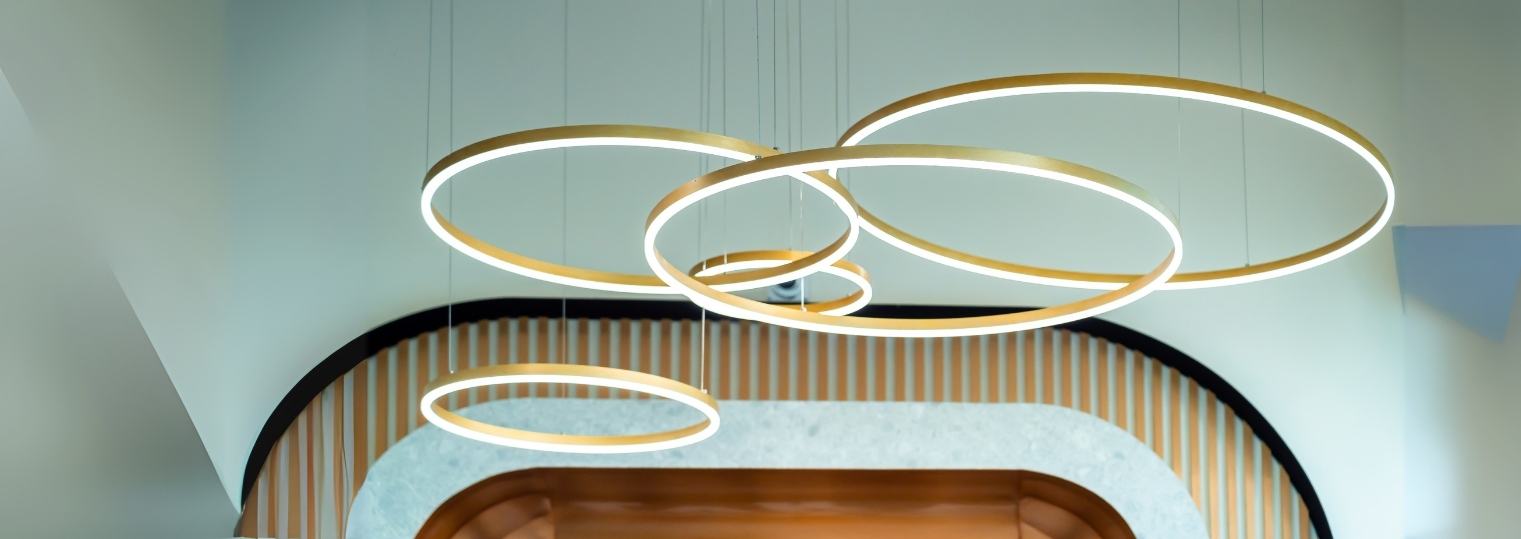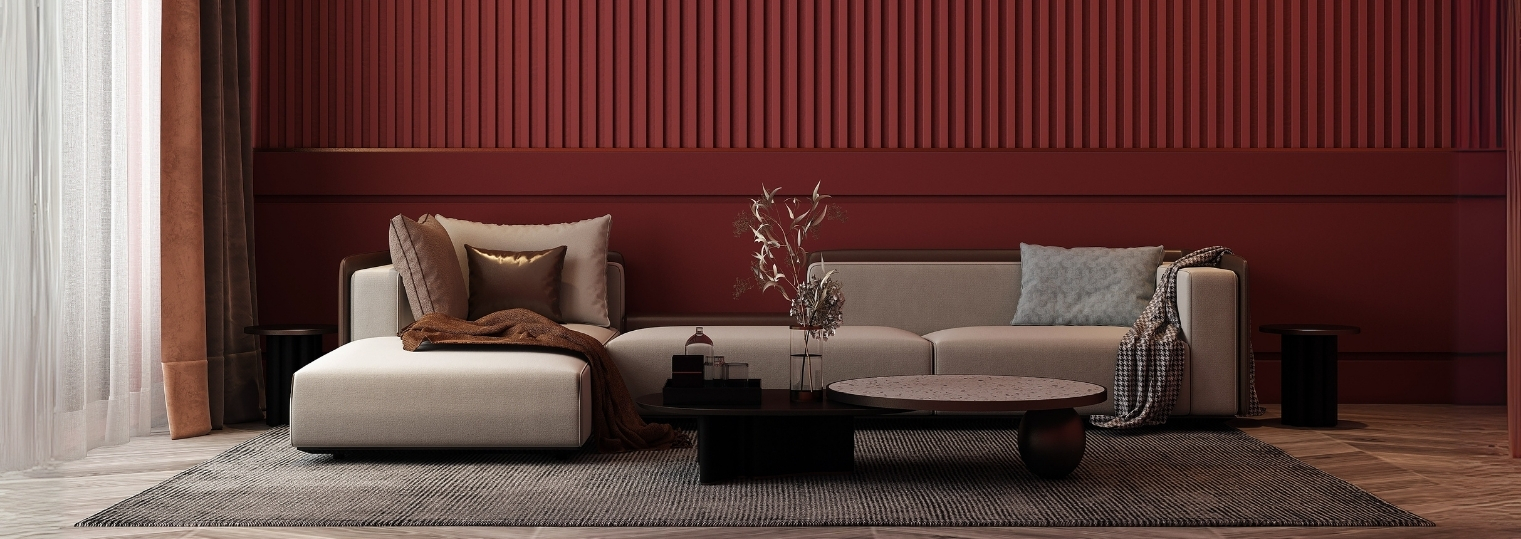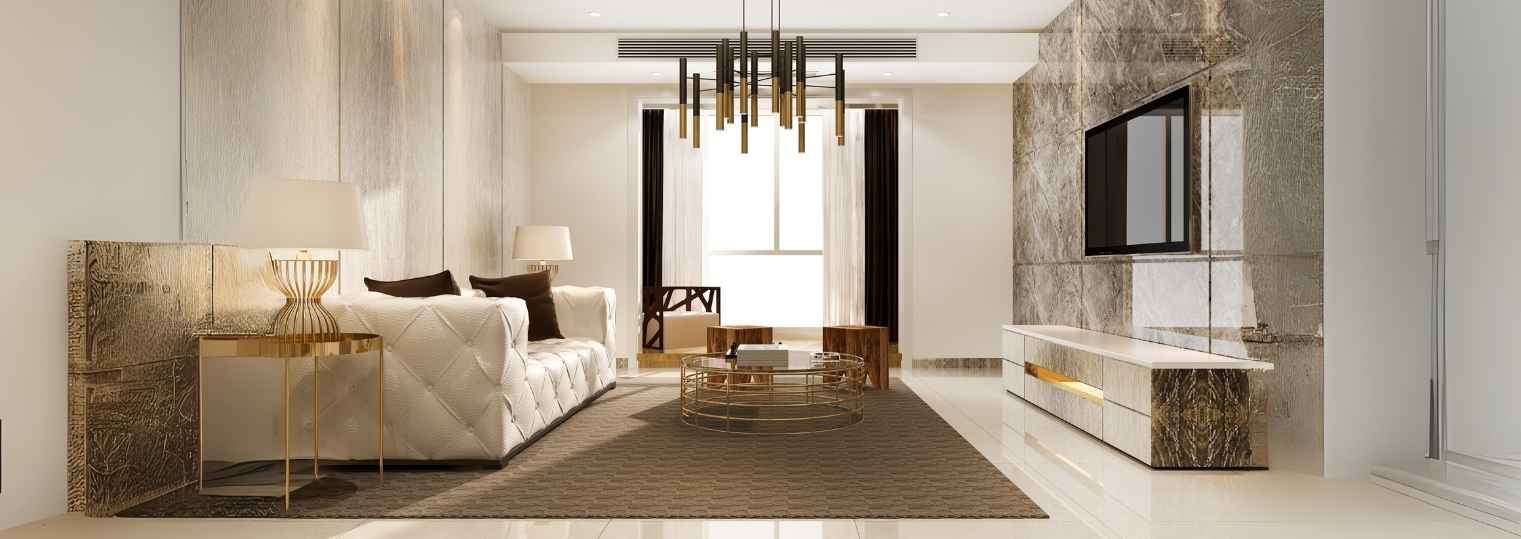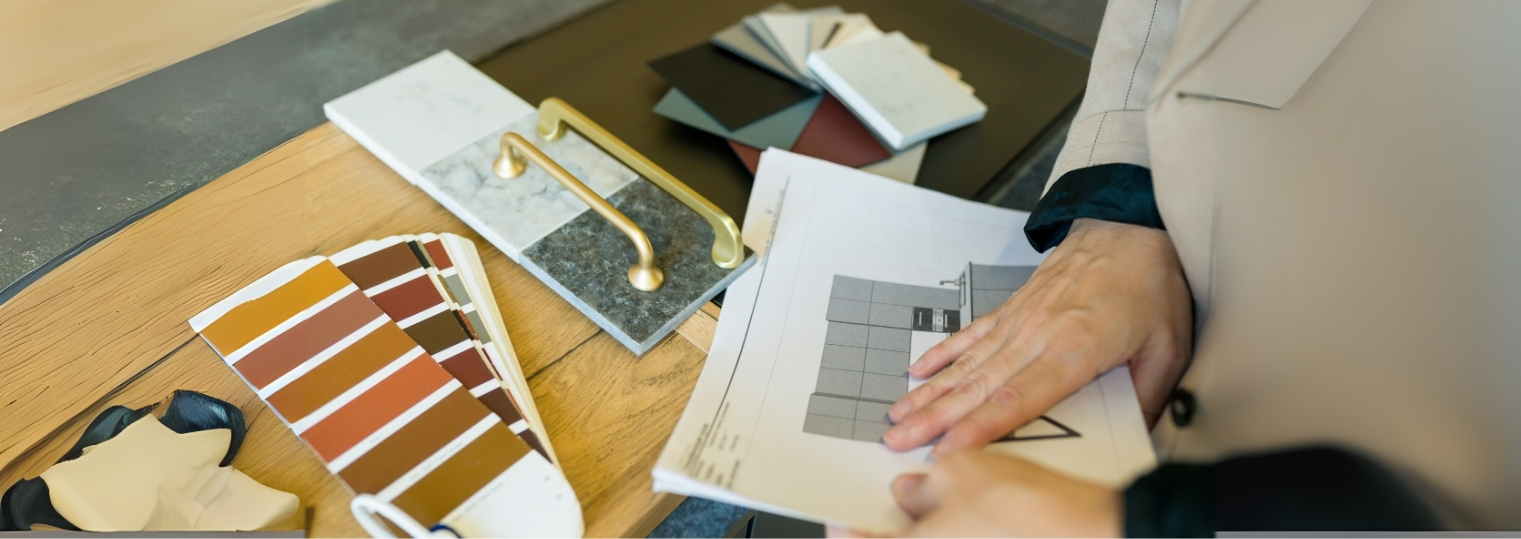3 minute read.
When it comes to interior design, colour isn’t just a visual choice, it’s a psychological tool. The right palette can energise a living room, calm a bedroom, or bring warmth to a kitchen.
From muted neutrals to statement shades, colour has the power to shape both your interiors and your emotions. Here’s how to approach colour in home interiors with intent and impact.
Beige, ivory, taupe, and soft greys are often considered the “safe zone” but that’s not a bad thing. These hues create a calming canvas and allow flexibility in styling.
Neutrals work well in minimalist interiors, open-plan layouts, or homes that lean toward organic and natural aesthetics.
Designer Tip: Layer multiple neutral tones for depth. Think warm greys with sand-coloured upholstery and natural wood flooring.
Terracotta, olive green, ochre, and clay tones have made a strong comeback in modern interiors. These colours bring a sense of groundedness and work beautifully in living rooms, dining areas, and transitional spaces.
Earth tones complement natural materials like wood, jute, and stone, making them perfect for interior styles such as Mediterranean, rustic modern, or Japandi.
Designer Tip: Use these shades on accent walls or cabinetry for warmth without overwhelming the room.
Rich hues like charcoal, forest green, navy, and burgundy add drama and depth. When used correctly, darker colours don’t shrink a space, they define it.
They’re ideal for home libraries, powder rooms, or even statement kitchens. Paired with the right lighting and textures, deep colours create a luxurious, cocooning feel in interiors.
Designer Tip: Matte finishes in dark tones feel more refined than glossy ones. Contrast with metallic fixtures or soft furnishings for balance.
Bold colours like mustard yellow, teal, or coral are perfect for homeowners who want to make a statement. These hues work well in spaces that need a creative lift, like kids’ rooms, home offices, or entryways.
Designer Tip: Pick one bold hue and build your colour story around it. A feature wall, a coloured ceiling, or even vibrant cabinetry can create visual impact without clutter.
Pastels like powder blue, mint, blush pink, or lavender have evolved beyond nursery use. In modern interiors, they offer a soft, optimistic charm.
Pair pastels with clean lines, minimal furniture, and soft textiles to create an airy, balanced look.
Designer Tip: Use pastels with contrasting materials like black metal or dark wood to avoid a space feeling too saccharine.
Colour in interiors isn’t just about trends, it’s about how you want to feel in your space. Whether you’re drawn to calming neutrals or expressive jewel tones, the key is choosing colours that support your lifestyle and personality.
We see colour not just as paint on the wall, but as the mood-maker of the home. The right palette can energise your mornings, soften your evenings, and create harmony across every room.



